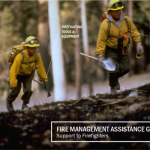AUSTIN, Texas – Seven Disaster Recovery Centers (DRCs) in Caldwell, Harris, Hays, Jim Wells and Nueces counties will close Aug. 27. That also is the final day for survivors of the May 4 to June 22 storms and flooding to register for FEMA recovery assistance or a loan from the U.S. Small Business Administration (SBA). The following DRCs will cease operations at 6 p.m. that Thursday:
Caldwell County: Martindale Baptist Church, 12351 Highway 142, Martindale, TX 78655.
Harris County: Leonel Castillo Community Center, 2101 South St., Houston, TX 77009. The DRC at Bayland Community Center, 6400 Bissonnet St., Houston, TX 77074, will close then transition the following day to an SBA Disaster Loan Outreach Center.
Hays County: San Marcos Activity Center (Front Lobby Area), 501 E. Hopkins St., San Marcos, TX 78666, and Wimberley Community Center, 14068 Ranch Road 12, Wimberley, TX 78676.
Jim Wells County: Old Armory, 1207, N. Cameron St., Alice, Texas 78332.
Nueces County: Richard M. Borchard Regional Fairgrounds, Conference Center- Meeting Room A, B & C, 1213 Terry Shamsie Blvd., Robstown, TX 78380, will close then transition the following day to an SBA Disaster Loan Outreach Center.
DRCs operated by the State of Texas and the Federal Emergency Management Agency and supported by other agencies have remained open until the needs of area residents were met. The centers have served as one-stop shops for information and guidance about disaster assistance.
Survivors with questions regarding their applications or the appeals process after the DRCs close have several ways to obtain information:
-
Go online at www.DisasterAssistance.gov.
-
Call 800-621-3362 or (TTY) 800-462-7585. People who use 711-Relay or Video Relay Services (VRS) can call 800-621-3362. Multilingual operators are available.
-
Visit the Texas Disaster Recovery website www.fema.gov/disaster/4223
FEMA’s National Flood Insurance Program has a call center to answer Texas policyholders’ flood insurance questions. Specialists can help with servicing claims, providing general information and offering technical assistance to aid in recovery. To speak with a flood insurance specialist, call 800-621-3362 between 8 a.m. and 6 p.m. Monday through Friday.
Visit http://www.fema.gov/texas-disaster-mitigation for publications and reference material on rebuilding and repairing safer and stronger.
For more information on Texas recovery, visit the disaster web page at www.fema.gov/disaster/4223, Twitter at www.twitter.com/femaregion6 and the Texas Division of Emergency Management website, www.txdps.state.tx.us/dem.
###
All FEMA disaster assistance will be provided without discrimination on the grounds of race, color, sex (including sexual harassment), religion, national origin, age, disability, limited English proficiency, economic status, or retaliation. If you believe your civil rights are being violated, call 800-621-3362 or 800-462-7585(TTY/TDD).
FEMA’s mission is to support our citizens and first responders to ensure that as a nation we work together to build, sustain, and improve our capability to prepare for, protect against, respond to, recover from, and mitigate all hazards.
The SBA is the federal government’s primary source of money for the long-term rebuilding of disaster-damaged private property. SBA helps businesses of all sizes, private non-profit organizations, homeowners and renters fund repairs or rebuilding efforts and cover the cost of replacing lost or disaster-damaged personal property. These disaster loans cover losses not fully compensated by insurance or other recoveries and do not duplicate benefits of other agencies or organizations. For more information, applicants may contact SBA’s Disaster Assistance Customer Service Center by calling 800-659-2955, emailing disastercustomerservice@sba.gov, or visiting SBA’s website at www.sba.gov/disaster. Deaf and hard-of-hearing individuals may call 800-877-8339.
FEMA’s temporary housing assistance and grants for childcare, medical, dental expenses and/or funeral expenses do not require individuals to apply for an SBA loan. However, those who receive SBA loan applications must submit them to SBA to be eligible for assistance that covers personal property, transportation, vehicle repair or replacement, and moving and storage expenses.





